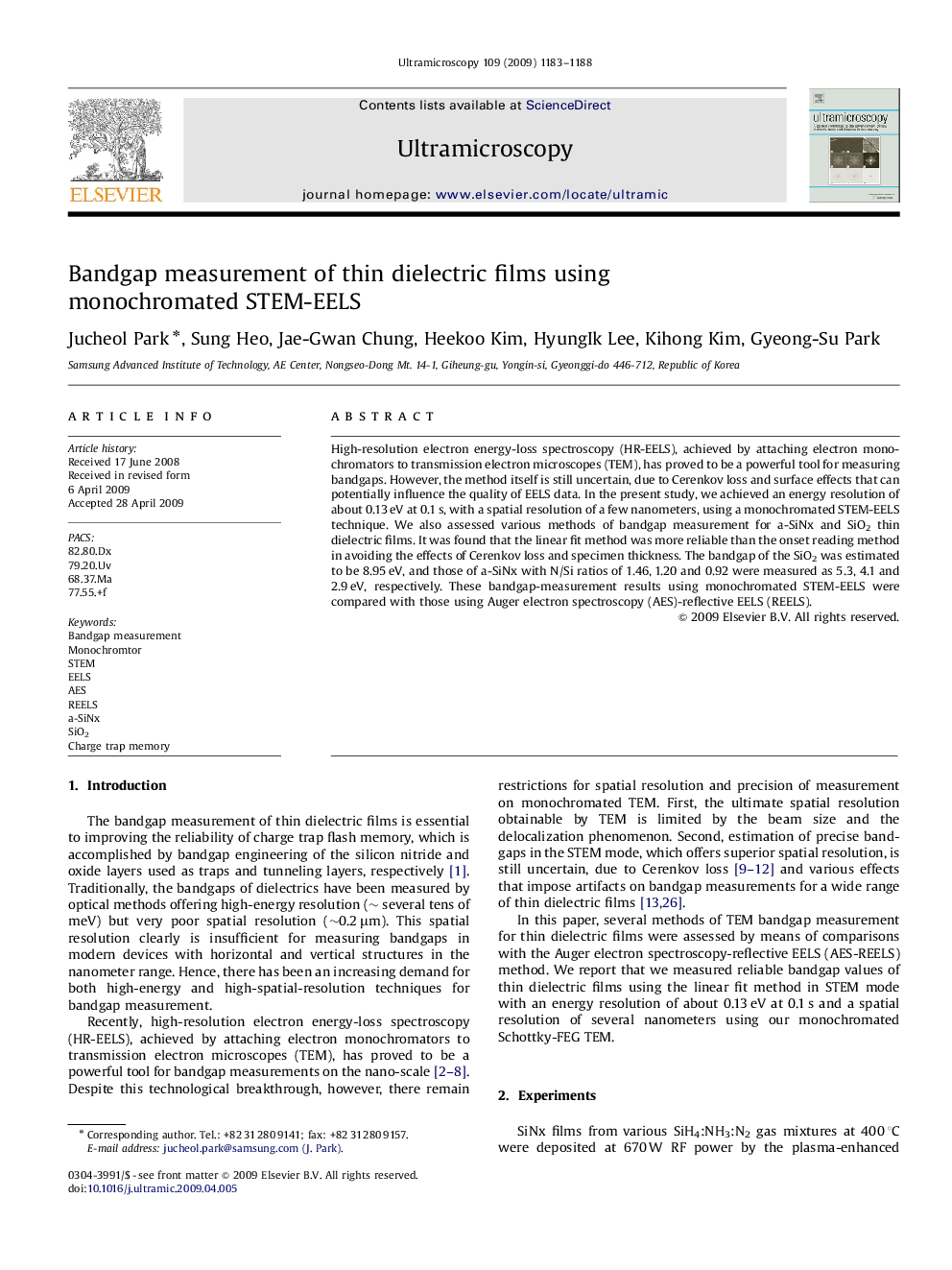| Article ID | Journal | Published Year | Pages | File Type |
|---|---|---|---|---|
| 10672596 | Ultramicroscopy | 2009 | 6 Pages |
Abstract
High-resolution electron energy-loss spectroscopy (HR-EELS), achieved by attaching electron monochromators to transmission electron microscopes (TEM), has proved to be a powerful tool for measuring bandgaps. However, the method itself is still uncertain, due to Cerenkov loss and surface effects that can potentially influence the quality of EELS data. In the present study, we achieved an energy resolution of about 0.13Â eV at 0.1Â s, with a spatial resolution of a few nanometers, using a monochromated STEM-EELS technique. We also assessed various methods of bandgap measurement for a-SiNx and SiO2 thin dielectric films. It was found that the linear fit method was more reliable than the onset reading method in avoiding the effects of Cerenkov loss and specimen thickness. The bandgap of the SiO2 was estimated to be 8.95Â eV, and those of a-SiNx with N/Si ratios of 1.46, 1.20 and 0.92 were measured as 5.3, 4.1 and 2.9Â eV, respectively. These bandgap-measurement results using monochromated STEM-EELS were compared with those using Auger electron spectroscopy (AES)-reflective EELS (REELS).
Related Topics
Physical Sciences and Engineering
Materials Science
Nanotechnology
Authors
Jucheol Park, Sung Heo, Jae-Gwan Chung, Heekoo Kim, HyungIk Lee, Kihong Kim, Gyeong-Su Park,
